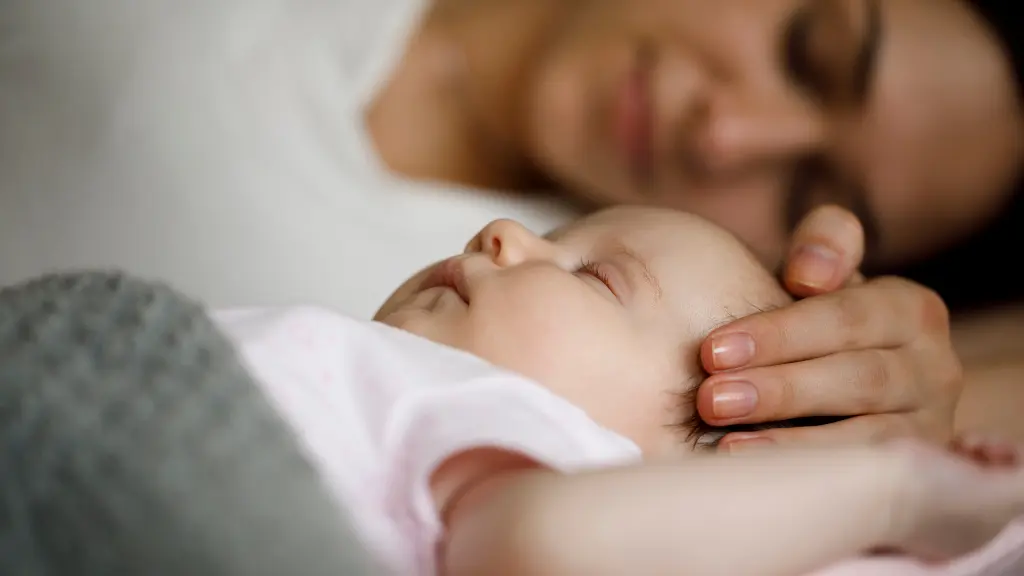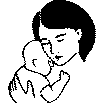As a new parent, one of your most challenging decisions is ” how to safely co-sleep with a newborn? “
Place your baby on their back on a firm, flat surface with no loose bedding or pillows. Position them next to one parent, away from the edge of the bed, and other potential hazards. Ensure no one can roll onto the baby by using a sidewall or bedside sleeper.

In this comprehensive guide, we’ll detail the dos and don’ts of safe co-sleeping, giving you the knowledge and confidence to make an informed decision.
Risks of Co-Sleeping
While co-sleeping can offer benefits, it’s essential to acknowledge the potential risks involved.
The most significant concern is the risk of accidental suffocation, entrapment, or Sudden Infant Death Syndrome (SIDS).
Infants can become trapped between the mattress and a wall, headboard, or other furniture, or they may become tangled in loose bedding or blankets.
Additionally, an adult or older sibling may inadvertently roll onto the baby, causing accidental smothering.
The Benefits of Co-Sleeping
Before we dive into the safety aspect, let’s explore the potential advantages of co-sleeping.
Many parents report a stronger bond, increased breastfeeding success, and better sleep for both themselves and their baby when sharing a sleep surface.
Co-sleeping can create a nurturing environment that facilitates responsive parenting, allowing you to quickly attend to your baby’s needs and promote a sense of security and attachment.
Preparing a Safe Co-Sleeping Environment
If you decide to co-sleep, creating a safe environment is paramount. Here are some crucial steps to take:
- Use a firm, flat surface: Opt for a firm mattress or co-sleeping device specifically designed for safe co-sleeping. Avoid soft surfaces like waterbeds, couches, or armchairs.
- Remove hazardous items: Clear the sleep surface of pillows, blankets, stuffed animals, or any other loose items that could potentially obstruct your baby’s airway or cause entrapment.
- Ensure a tight-fitting sheet: Use a tightly fitted sheet on the mattress to prevent the baby from becoming trapped between the bed and the frame.
- Avoid co-sleeping if impaired: Never co-sleep if you or your partner have been drinking alcohol, using drugs, or are excessively tired, as these conditions can impair your awareness and ability to respond to your baby’s needs.
Positioning Your Baby Safely
Proper positioning is crucial for safe co-sleeping. Here are some guidelines to follow:
- Place your baby on their back, with their face clear and uncovered.
- Ensure your baby’s head is not covered by bedding or blankets.
- Position your baby close to you but not in between you and your partner.
- Avoid co-sleeping in a bed with other children or pets.
What is the safest co-sleeping position?
When it comes to co-sleeping with your newborn, choosing the safest position is crucial to ensure both comfort and safety. One highly recommended position is the “Cuddle Curl.”

In this position, you lie on your side, facing your baby, with your body curled around them in a C-shape.
This arrangement allows for close physical contact while providing a protective barrier against accidental rolling.
The Cuddle Curl position offers several benefits:
- Easy Access for Breastfeeding: By positioning your baby beside you, breastfeeding becomes more convenient during the night. You can easily respond to your baby’s hunger cues without fully waking or needing to move from bed.
- Enhanced Bonding: Sharing close physical contact in the Cuddle Curl position fosters a deep sense of connection between you and your baby. The warmth and reassurance of your presence can help soothe your little one and promote feelings of security.
- Reduced Risk of Overheating: With your body acting as a natural barrier, your baby is less likely to become overheated when sleeping in the Cuddle Curl position. This can help regulate their body temperature and reduce the risk of discomfort or complications.
- Minimized Risk of Accidental Rolling: By positioning yourself in a way that naturally protects your baby from rolling, such as curling your body around them, you can significantly reduce the risk of accidental suffocation or injury during co-sleeping.
When practicing the Cuddle Curl position, remember to:
- Ensure that your baby is positioned on their back, with their head clear of any obstructions and their face uncovered.
- Keep pillows and heavy bedding away from your baby to prevent suffocation hazards.
- Maintain a comfortable sleep environment with proper ventilation and room temperature control.
By adopting the Cuddle Curl position and following recommended safety guidelines, you can enjoy the benefits of co-sleeping with your newborn while prioritizing their safety and well-being.
Safety Precautions
Even with a safe environment and proper positioning, it’s essential to take additional precautions when co-sleeping:
- Avoid heavy blankets or comforters: Use lightweight blankets or sleep packs to reduce the risk of overheating or accidental covering of your baby’s face.
- Be mindful of your clothing: Wear minimal, lightweight clothing to prevent overheating or entanglement with your baby.
- Monitor your baby’s sleep: Regularly check on your baby’s breathing and positioning throughout the night.
- Consider room-sharing instead: If you have concerns about co-sleeping, consider room-sharing, where your baby sleeps in a separate, safe sleep space in the same room as you.
Tips for Safe Co-Sleeping
To ensure a safe and successful co-sleeping experience, consider the following tips:
- Establish a routine: Develop a consistent bedtime routine to help your baby understand when it’s time to sleep.
- Communicate with your partner: Discuss and agree on co-sleeping guidelines and responsibilities with your partner to ensure everyone is on the same page.
- Be mindful of your baby’s sleep cues: Learn to recognize your baby’s sleep cues and respond promptly to their needs.
- Trust your instincts: If you ever feel uncomfortable or unsafe while co-sleeping, consider transitioning your baby to a separate sleep space.
When to Stop Co-Sleeping?
There’s no definitive age when you should stop co-sleeping, as each family’s situation is unique.
However, most experts recommend transitioning your child to their own sleep space by the time they reach toddlerhood or when they start rolling, crawling, or becoming more mobile.
This transition can be gradual and may involve room-sharing or using a bedside co-sleeper before moving your child to their room.
Alternative Options:
If you decide that co-sleeping is not the right choice for your family, there are alternative options to consider:
- Room-sharing: Place your baby’s bassinet or crib in your room, allowing for proximity without sharing the same sleep surface.
- Bedside sleepers: These attachable bassinets or co-sleepers provide a separate, safe sleep space right next to your bed.
- Baby monitors: Use a video or audio monitor to keep an eye on your baby while they sleep in a separate room.
Bottom Line
Co-sleeping can be a wonderful experience for many families, but it’s essential to prioritize your baby’s safety above all else.
By creating a safe environment, following proper positioning guidelines, and taking necessary precautions, you can minimize the risks associated with co-sleeping.
Remember, every family’s situation is unique, and it’s crucial to make an informed decision that aligns with your values, comfort level, and your baby’s needs.
If you have any concerns or doubts, don’t hesitate to consult with your healthcare provider for personalized guidance.
Is it safe for my newborn to sleep in the same bed as my partner and I?
It’s generally not recommended for a newborn to sleep in the same bed as two adults. The safest co-sleeping arrangement is with only one adult present, as there’s a risk that the infant could get rolled onto or trapped between parents. Consider using a bedside sleeper or having the baby sleep between one parent and a firm sidecar wall.
At what age should I stop co-sleeping with my baby?
There’s no definitive age, but most experts advise transitioning babies to their own sleep space by the time they start rolling over, crawling, or around 6-12 months old. Co-sleeping becomes less safe as babies gain mobility and the risk of falls or entrapment increases. Make the transition gradually for everyone’s comfort.
